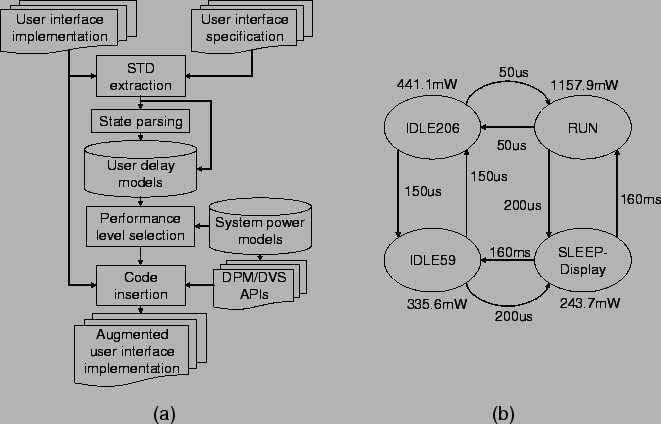


Next: Theoretical energy savings
Up: Utilizing User Delays for
Previous: Utilizing User Delays for
For simplicity, we assume there is only one interactive
application under consideration, which is usually true for
handheld computers. Also, we assume application programming
interfaces (APIs) are available to applications to change the
system performance levels. The flowchart for inserting the
performance level transition code is given in
Fig. 3(a). First, the STD of the user interface is
extracted, and major user interface event handlers/states are
identified, through either post-implementation analysis or
pre-implementation specifications. If the psychological model is
used, the user interface content in each state is parsed to get
the values of the parameters for user delay models, as described
in the previous sections. The parameter values only depend on the
current state. Based on the predicted delay, an appropriate
performance level is selected for the state and the corresponding
code is inserted at the end of the corresponding event handler.
The inserted code can either force the system back to a higher
performance level after a time interval based on the predicted
user delay, or just let the user input raise the performance
level, depending on the delay overhead for performance level
transition and user's delay tolerance.
Figure 3:
(a) The flowchart for code insertion for
DPM/DVS, and (b) power modes and mode transitions.
 |



Next: Theoretical energy savings
Up: Utilizing User Delays for
Previous: Utilizing User Delays for
Lin Zhong
2003-12-20

